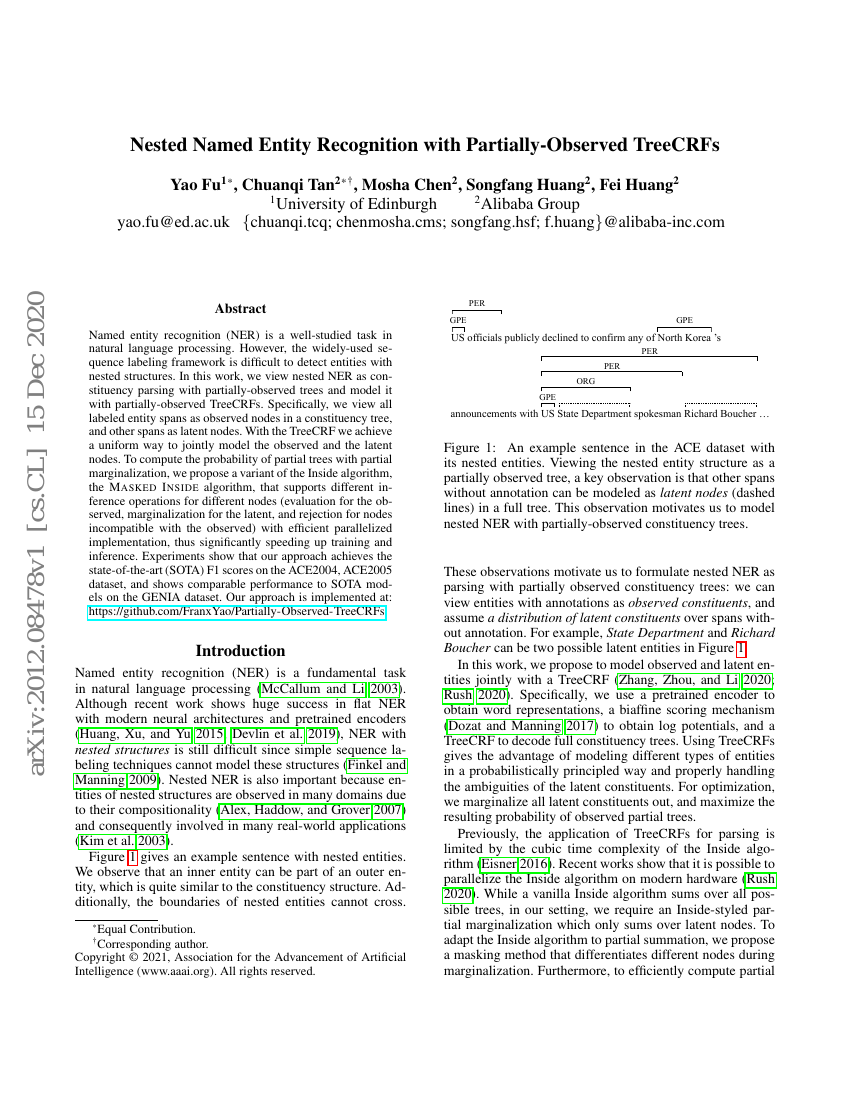Command Palette
Search for a command to run...
Yao Fu Chuanqi Tan Mosha Chen Songfang Huang Fei Huang

Abstract
Named entity recognition (NER) is a well-studied task in natural language processing. However, the widely-used sequence labeling framework is difficult to detect entities with nested structures. In this work, we view nested NER as constituency parsing with partially-observed trees and model it with partially-observed TreeCRFs. Specifically, we view all labeled entity spans as observed nodes in a constituency tree, and other spans as latent nodes. With the TreeCRF we achieve a uniform way to jointly model the observed and the latent nodes. To compute the probability of partial trees with partial marginalization, we propose a variant of the Inside algorithm, the \textsc{Masked Inside} algorithm, that supports different inference operations for different nodes (evaluation for the observed, marginalization for the latent, and rejection for nodes incompatible with the observed) with efficient parallelized implementation, thus significantly speeding up training and inference. Experiments show that our approach achieves the state-of-the-art (SOTA) F1 scores on the ACE2004, ACE2005 dataset, and shows comparable performance to SOTA models on the GENIA dataset. Our approach is implemented at: \url{https://github.com/FranxYao/Partially-Observed-TreeCRFs}.
Code Repositories
Benchmarks
| Benchmark | Methodology | Metrics |
|---|---|---|
| nested-named-entity-recognition-on-ace-2004 | PO-TreeCRFs | F1: 86.6 |
| nested-named-entity-recognition-on-ace-2005 | PO-TreeCRFs | F1: 85.4 |
| nested-named-entity-recognition-on-genia | PO-TreeCRFs | F1: 78.2 |
Build AI with AI
From idea to launch — accelerate your AI development with free AI co-coding, out-of-the-box environment and best price of GPUs.